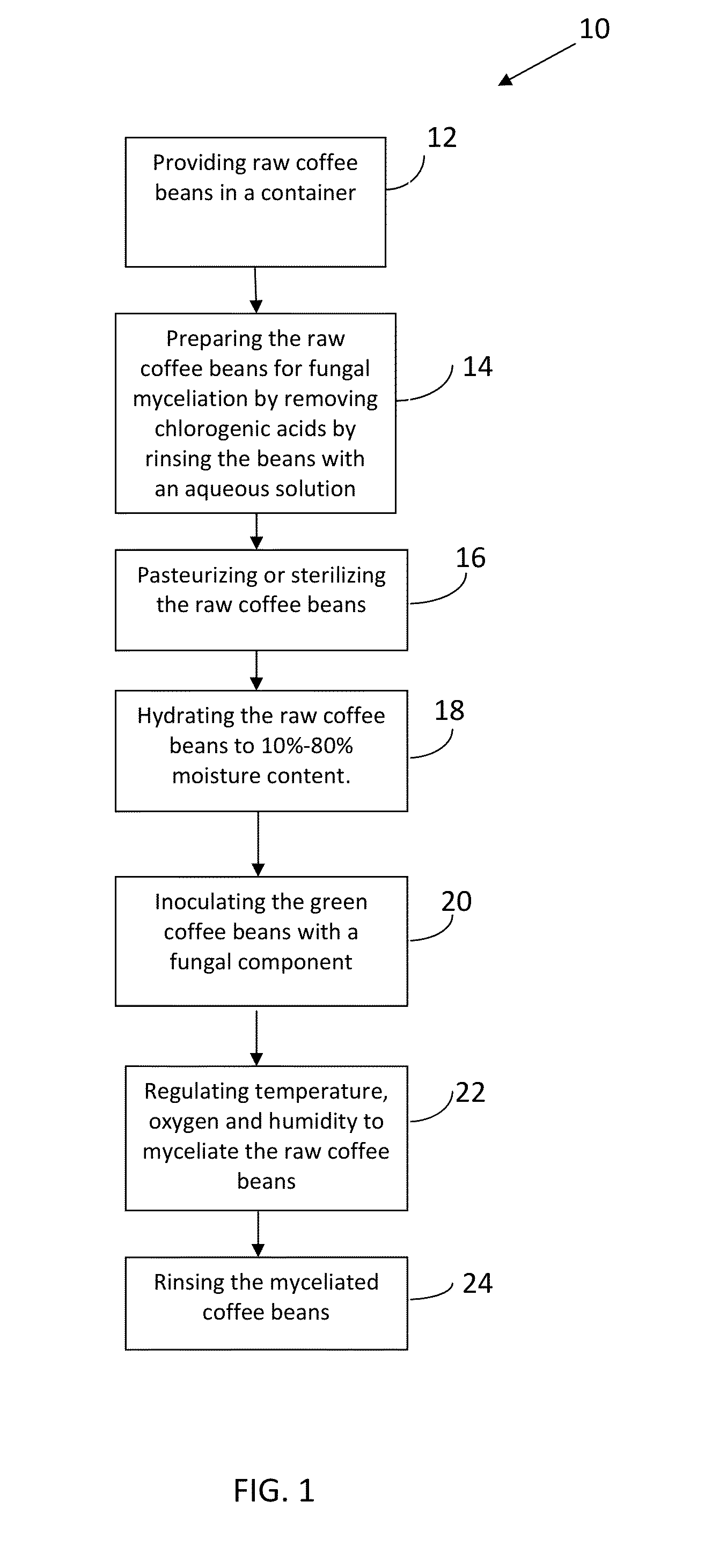Improved method for myceliating raw coffee beans including removal of chlorogenic acids
a technology of chlorogenic acid and coffee beans, which is applied in coffee, green coffee treatment, food science, etc., can solve the problems of reducing the ability of these fungal strains to optimally metabolize various substrates, bad taste of chlorogenic acids, and affecting the flavor of coffee, so as to improve the rate of myceliation of coffee and speed up the myceliation rate of co
- Summary
- Abstract
- Description
- Claims
- Application Information
AI Technical Summary
Benefits of technology
Problems solved by technology
Method used
Image
Examples
Embodiment Construction
[0019]FIG. 1 shows a method 10 of the present invention. The method 10 includes the step 12 of providing raw coffee beans in a container, the step 14 of preparing the raw coffee beans for fungal myceliation by removing chlorogenic acids. In one embodiment the step 14 includes rinsing the beans in an aqueous solution.
[0020]The method 10 further includes the step 16 of pasteurizing or sterilizing the raw coffee beans, the step 18 hydrates the raw coffee beans to 10%-80% moisture content, the step 20 inoculates the green coffee beans with a fungal component, the step 22 regulates temperature, oxygen and humidity in the container to myceliate the raw coffee beans. This step 22 optimizes the rate of myceliation. The step 24 rinses the myceliated coffee beans to eliminate surface build-up of mycelial metabolites and other undesired material caused by the myceliation step 22.
[0021]A method for manufacturing coffee by clean myceliation comprises the following steps. Step 1: preparing Petri ...
PUM
 Login to View More
Login to View More Abstract
Description
Claims
Application Information
 Login to View More
Login to View More - R&D
- Intellectual Property
- Life Sciences
- Materials
- Tech Scout
- Unparalleled Data Quality
- Higher Quality Content
- 60% Fewer Hallucinations
Browse by: Latest US Patents, China's latest patents, Technical Efficacy Thesaurus, Application Domain, Technology Topic, Popular Technical Reports.
© 2025 PatSnap. All rights reserved.Legal|Privacy policy|Modern Slavery Act Transparency Statement|Sitemap|About US| Contact US: help@patsnap.com

